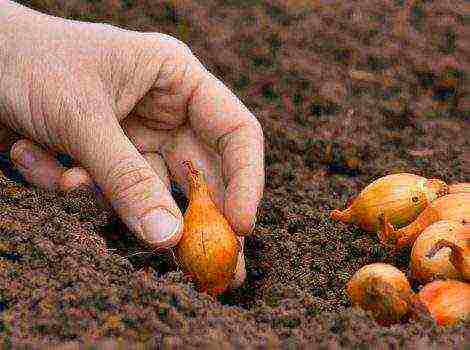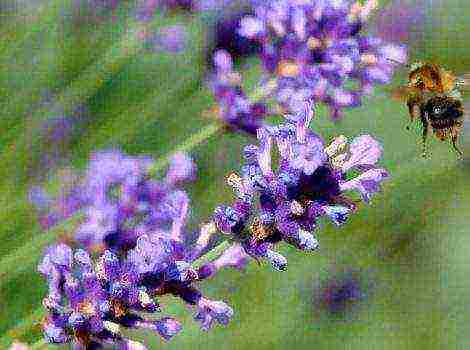Content [show]
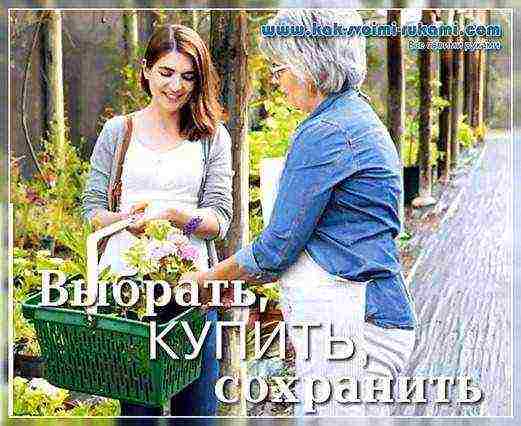
Buying plants is a responsible business. Let's talk about that. what you need to pay attention to when choosing seedlings of fruit and ornamental trees and shrubs
SPRING - TIME TO BUY PLANTS, BOTH FRUITS AND DECORATIVE. IT IS IMPORTANT NOT ONLY TO CHOOSE THE RIGHT TREE, SHRUB OR FLOWER, BUT ALSO PRESERVE IT BEFORE PLANTING IN THE GARDEN. ABOUT THIS AND LET'S TALK
We will learn to choose, store and plant planting material in the spring.
Seedlings grown in containers are the easiest to transplant, their root system is well developed, not disturbed, such plants quickly take root and grow. It turns out that we simply transfer the plants: when we take them out of the container and plant in the garden, we preserve the integrity of the root system.
Seedlings grown in the field, in the nursery, are often wrapped in foil, after adding nutritious soil to the roots and forming a briquette, which is placed in a colorful package. The root system of such plants does not dry out; in this state, the seedling can be stored for several months.
See also: Storage of seedlings - how to save before spring planting?
Fruit trees
WE BUY SEEDLINGS
Before purchasing a seedling, inspect it carefully.
He must be healthy, the bark must not be damaged. This is the first thing to pay attention to.
When buying in a frosty period, pay attention to the buds: they should be dormant, and the seedling itself should not be overdried (which is well displayed on the bark, it becomes wrinkled, a slight crunch is heard when bent).
The shoots of a healthy seedling are elastic, bend easily, have an even bark color, and the buds are clearly visible.
Examine the vaccination site carefully:one hundred accretion of rootstock and scion must be clean, with a characteristic scar.
The tops of the seedlings can be pruned - it's not scary; form a new leader during the growing season, and after a year or two you will not see the cut.
Opened buds on a seedling are permissible, in this case, we can plant it immediately in a permanent place, and there is no need for storage.
WE SAVE BEFORE LANDING
Do not bring purchased seedlings into the heat., by doing this you will only stimulate growth. Wrap them in a nonwoven covering material and store them in a cold room until planting (ideally in a cellar, cold basement, garage, or even on a balcony).
Check the condition of the soil, do not let it dry out, moisturize in a timely manner, but also do not fill.
The seedling must be accompanied by a label indicating the variety, it must be attached to the seedling or to the container in which it was grown.
Protect the plant from sunburn before planting (or immediately after);
You can use covering material or garden whitewash.
Fruit shrubs
All seedlings of fruit bushes (currants, gooseberries, raspberries, honeysuckle, blackberries) grown in containers, after purchase, can be stored outdoors in the shade or in a cold room until disembarked in a permanent place.
Seedlings with an open root systempurchased from the nursery, immediately place in a bag, wrap the roots in cloth or paper, moisturize and keep in the shade. On the garden plot, if a place for planting is not yet ready, dig in the seedlings in the garden bed, sprinkle the roots with soil, and water well. It is not necessary to soak such seedlings; some immerse them in a bucket of water - that's a mistake! An attempt to soak dried seedlings, of course, has the right to be, but in this case it is much more effective to cut the roots with a sharp pruner, shorten the shoots greatly, and then plant the plant in loose fertile soil and water it well.
Blackberry and raspberry seedlings should be chosen with care... Do not forget that the shoots of these crops live for two years. In the first year they gain vegetative mass, in the second year they bloom and give berries, after which they dry up. Therefore, the seedlings should be shoots of the first year, and they will give the first harvest only in the second year.
Perennials
Perennial flower crops are most often offered by sellers in the spring. The desire to purchase a new variety is great, and colorful packaging appears already in February. But it is still very early, and we do not understand what to do with them, how to save them until they are planted in the garden in April-May.
MODERN VARIETIES OF HYBRID Iris amaze the imagination with the shape and color of the flowers (white, pink, crimson, blue, blue). Old varieties are often found on garden plots, many consider them almost weedy, often planted from the site on the side of garden roads; even thrown away, they often take root, grow and bloom beautifully in wastelands.
Modern varieties, in contrast to the "unkillable" old ones, are often capricious, which undoubtedly pays off for their beauty.
In the spring, dealerships of the coveted rhizome with one "spatula" of leaves appear on sale (this is how the fan of iris leaves is called). Carefully inspect the cut: there should be no rot, sores and damage. Remember that it is better to dry this plant (even if the leaves are almost dry, they will tolerate it more easily) than to keep it very moist. It rots easily when wet.
Damaged rhizomes of iris can be cured, rotten parts can be cut with a sharp knife to healthy tissue, and the cut can be powdered with crushed charcoal or treated with ordinary brilliant green, applying it to the cut with a cotton swab. Store the rhizomes in a cool, dry place, rarely dampening slightly to avoid drying out.
Daylilies and hosts have a well-developed root system, often with only one bud. Such delenki are most often found in bags with ventilation holes. Choose healthy specimens with a well-formed kidney. They should be planted in peat pots and placed in a cold room or cellar, periodically slightly moistening. And in the garden, they can be planted in a permanent place along with the pot.
Hosta... Please carefully read the description of the variety before purchasing. Pay attention to the size of the bush: hosts are very different in size of leaves - there are giants with a bush up to a meter in size, and there are babies whose bush is no more than 20 cm. Consider this when planting in a permanent place.
Day-lily... This plant, on the contrary, grows well in the sun - it practically does not bloom in deep shade and grows poorly. The varietal variety of this perennial captivates with its many colors, long flowering and unpretentiousness.
ON A NOTE
I want to draw your attention to the lilac. There is an opinion that it is easy to propagate it - just dig up the growth and plant it.
But disappointment comes when the planted shoots bloom: instead of the desired variety, the most common lilac blooms. The point is this: varieties are often propagated by grafting, grafting varietals on wild shoots - which blooms with you if you separate the shoots from it. Varietal lilacs have a weak root system, so it is advisable to propagate them by grafting, like apple trees, pears, plums.
Reference by topic: Choosing quality seedlings - types of rootstock, planting and care
How to preserve seedlings before planting in open ground
Saplings: how to choose and save correctly. (11.02.16 g.)
Below are other entries on the topic "How to do it yourself - a householder!"
How to store seedlings in a trench? Do-it-yourself attachment for seedlings Purchased ... When is it better to plant seedlings - in autumn or spring? Which tree planting is better - ... How to store rose seedlings Correctly store seedlings of the queen of flowers So ... Smolensk method of planting seedlings and a garden according to this system How to plant trees according to "Smolensk ... Storage of seedlings - how to save until spring planting? HOW TO PRESERVE SEEDLINGS TILL SPRING ... Do-it-yourself autumn planting of an orchard - professionals advise Autumn planting of seedlings - from ... How to preserve planting material until spring How to store seedlings and cuttings ...
Subscribe to updates in our groups.
Let's be friends!
" How
we plant it correctly
Whose lads are you going to be?
How not to be mistaken when choosing seedlings? When buying a seedling in the fall, the buyer has the opportunity to assess its quality, and sometimes its compliance with a certain variety in terms of leaves. In the spring, it is quite difficult even for a specialist to determine the variety of a seedling, and an ordinary buyer generally cannot always distinguish a cherry from a pear, therefore, seedlings should always be purchased only from reliable, trusted sellers. It is best if the person who has grown the seedling himself is the seller of his goods. Then he knows almost everything about his brainchild. If the seedlings are grown in one of the local farms, which are a large nursery, then some are grafted here, others are dug up, and still others are sold. There are more chances to purchase a re-grading in such a farm, but the quality of the seedlings is usually good. Much here depends on the quickness of the chief agronomist of the farm.
The lion's share of all the seedlings sold on the market is occupied by the so-called "fishing rods" - seedlings brought from the southern regions. Annual seedlings (without side branches) can reach two meters, hence the nickname. Two-year-old southerners (with side branches) look like our three-four-year-olds, so they are in great demand among novice gardeners. Such seedlings have one destiny - everything that is above the snow cover freezes every year and dies off after winter. The most unpleasant thing here is that sellers of southern seedlings never admit that the seedlings are imported, but hide behind either the honest name of a reputable nursery, or are called nurseries that do not exist at all. For example, "Orenburg nursery", although I know for sure that over the past ten years not one of the nurseries operating near Orenburg, which, by the way, have very specific names, has not traveled to the city of Orsk with seedlings. In order to somehow protect yourself from deception, you can ask the seller for the passport, the address and phone number of the nursery. If the seller, nevertheless, distrusts you, call or go to the indicated address and purchase the seedlings on the spot. After all, with what trepidation we sometimes expect fruiting, caring for a plant for several years, and what a disappointment it is when you realize that you were cheated in an impudent way.
A special conversation about the purchase of seedlings by mail. You can't do without it now, especially if you would like to purchase some new product. But there can be several problems here. First, you need to understand that the burden of testing this new, sent from another region, in our climatic conditions, falls on you. It is not a fact that well-advertised varieties will grow well with us. After all, they could be grown in warmer regions or, in general, abroad - somewhere in Poland or Holland. Secondly, long-term postage, during which it is impossible to create normal storage conditions, greatly weakens living plants.And, thirdly, outright deception, when, using powerful advertising, you are offered at fabulous prices some curly strawberry that does not exist in nature. Respectable sellers of planting material, as a rule, indicate the postal address of the nursery, phone numbers, names of managers or owners, and do not hide behind a faceless post office box. Usually they sell seedlings not only by mail, but also in the nursery, or they have their own trade pavilions.
The quality of the seedlings.
You need to learn how to determine the quality of seedlings yourself. The best quality seedlings are stored in the nursery until the spring sale, as a rule, in special storage facilities at a certain temperature. When such seedlings are taken out of the cold storage for sale, their buds are not at all blossoming, although the trees on the street may already be green. The bark of healthy seedlings should be smooth, if you pick it off with your fingernail, then the wound should be green and moist, otherwise the seedling may be dry. If a seedling for sale has blossomed leaves, it is definitely alive at the moment, and it looks more attractive than one without leaves, but such a seedling has already spent a lot of nutrition on forcing leaves, so it will take a very long time to take root or die.
All apple and pear seedlings, as well as most plum and cherry seedlings, must be grafted. The strapping of the vaccination site must be removed by the time of sale. A sapling with a strapping - not completed to the end. When filming it at home, you may find that the vaccination site is heavily crushed and thus weakened. Some cherry and plum seedlings may not be grafted, that is, they may be self-rooted. These are normal seedlings, but you need to be prepared for the fact that such seedlings can give abundant growth in the garden. Therefore, the most modern plum and cherry seedlings, at present, are produced grafted onto special clonal rootstocks, which do not produce overgrowth.
When choosing seedlings, you need to know that different crops have seedlings of the same age of different sizes. The smallest are dwarf apple trees, although their production is more expensive than vigorous apple trees. Then there are dwarf pears and grafted cherries. The largest seedlings are in plums, apricots, vigorous apple and pear trees. Make sure that the root system is proportionate to the aboveground part (about half of the seedling should, ideally, be occupied by the root). Even if you are being served a packaged seedling, be sure to inspect the root, you can trim the tips of the roots to make sure they are not black and dry.
We save the seedlings before planting.
So, the seedlings have been selected, but some time will pass before planting - from several hours to several days. I must say that this is a very crucial period during which inexperienced gardeners can ruin good seedlings. The root system of plants is designed in such a way that it can absorb water very quickly, but at the same time, it can also evaporate moisture just as quickly. The roots dry quickly in the open air, so they must be carefully packed in polyethylene, after sprinkling with water or wrapping them with a damp cloth. Store seedlings before planting in a cool room. A seedling, packed in polyethylene and left, for example, on a sunny balcony, can simply be cooked there under a film. Before planting, the root system of the seedling, especially if it is dry, can be immersed in water for several hours. But it is impossible to store seedlings in water for a long time.
We plant correctly.
Preparing the landing pits. For trees and large shrubs about 50 x 50 cm, for smaller shrubs. The top layer of earth is to one side of the pit, the bottom to the other. At the bottom of the pit with a cone we pour one or two buckets of humus mixed with earth from the upper layer, set a seedling on the cone, straightening the roots, fill it first with the remnants of the upper earth, and then the lower one. Water abundantly.After the water is absorbed and the soil in the hole sags, we fill it with the remnants of the earth and build curbs at the hole, you can mulch the hole with humus to prevent cracking of the earth. It is advisable to tie trees and some grafted shrubs to a peg stuck next to the seedling so that it does not break with gusts of wind. Here are the basic guidelines for all seedlings. It remains to figure out the planting depth and the distance between plants.
Saplings on seed stocks are buried to the root collar - the conditional place of transition of the root into the trunk. The vaccination in this case will be 5-15 cm above ground level. Saplings on clonal rootstocks, that is, on rootstocks propagated by cuttings or green cuttings, are usually planted in the ground to the level of grafting. But here, too, there may be different options, depending on the tasks. For example, a dwarf pear has a quince as a root, which has a low winter hardiness. With proper planting, when the graft is at ground level, the quince is completely in the ground and hibernates successfully. But in critically cold winters without snow, and especially if a dwarf pear is planted in an unfortunate place where all the snow is constantly blown out from under it, the root system can freeze. To avoid this, you can deepen the grafting site below ground level by 10 - 20. This will in no way affect the early, already in the third year, the entry of a dwarf pear into fruiting. But, over time, a deeply planted pear can move on to its roots and grow into a more vigorous tree than just a dwarf tree. If you also bury the plum accidentally, then, moving to its roots, it can give rise to shoots. The plum stock that we use is very winter-hardy, so it is permissible for the grafting site to be above the ground.
The distance between seedlings in a row is approximately the same. Between dwarf apple trees, pears and cherries 2 m, between semi-dwarf apple trees - 2.5 m, between plums - 3 m, between apricots and ordinary (vigorous) apple trees and pears - 4 m.When planting in several rows, the distance between rows is increased one to two meters. Rows, for better illumination, are located from north to south.
When purchasing seedlings, you need to take care of their normal pollination. The apple, cherry, and in recent years the pear, which are widespread in our gardens, do not have problems with pollination. It is better to plant plums of at least two different ones belonging to related species. Sea buckthorn at least two plants. One male and one or more female. The male plant will not bear fruit. Pollinated by the wind, so plant nearby. Honeysuckle is planted at least two, and preferably three bushes of different varieties. Everyone will bear fruit. Apricots are considered to be partially self-fertile. Solitary trees often bear fruit well. But, in order not to risk it, it is better to plant two different ones. Grape varieties have different types of flowers, so if you don't know for sure whether you have a self-fertile variety or not, it is better to plant several different varieties. Raspberries, currants and gooseberries usually do not have problems with pollination, as they are widespread in our gardens, but they still tie better in variegated plantings. But blackberries are all self-fertile, so one bush is enough for pollination.
The gardener Dolbnya F.I. 2010
how to store currant seedlings before planting
 January 1 Now I want to tell you how to preserve seedlings before planting in the ground. Ways: 1- the best. send the seedlings to the trench, before laying in the trench, I remove the packaging (polyethylene or a box), leave only peat on
January 1 Now I want to tell you how to preserve seedlings before planting in the ground. Ways: 1- the best. send the seedlings to the trench, before laying in the trench, I remove the packaging (polyethylene or a box), leave only peat on
I ordered seedlings with ACS (apple trees, cherries, currants, etc.), but an overlay came out and planting them (my husband is sent on a business trip), it will be necessary to keep them at home for a week. Or maybe they can be planted in pots with soil before planting?
Sea buckthorn is a fairly winter-hardy plant, although in especially cold winters twigs and flower buds can freeze slightly. Its yield directly depends on the weather, while only female individuals give fruits. In order to carry out their pollination, a male sapling is also needed. The sex of a plant can most often be determined only at the beginning of fruiting.
Planting site and soil
Sea buckthorn loves sunlit areas, if you shade it, it begins to grow poorly and bears fruit rather poorly. The plant should be planted on light soils with a high degree of fertility and a sufficient level of moisture. It does not like stagnant water, so groundwater should be at a depth of at least one meter from the soil surface. Acidic soils are subject to liming with the addition of slaked lime (from four hundred to six hundred grams per square meter). This substance should be scattered over the surface of the earth, and then dig it onto the bayonet of a shovel. This training usually takes place in October.
If you are going to plant a plant on heavy and loamy soil, it is worth improving its air permeability by mixing the upper layers with river sand (rather coarse-grained), as well as peat or humus, observing an approximately equal ratio. In such a substrate, it is also worth adding two hundred grams of superphosphate and thirty to fifty grams of potassium salt. Neither lime nor nitrogenous fertilizers should be applied inside the planting pit, as they can provoke root burns.
January 17, 2009 What they usually do is cover the roots, store in a cool place until planting. Saplings start to grow, white thin roots develop - the most important plant feeders when planting.
Allocating a site for planting sea buckthorn, keep in mind that its roots extend beyond the crown for another couple of meters. Therefore, you should not dig up these areas, they must be regularly loosened five to ten centimeters in depth.
Landing
You should not purchase sea buckthorn seedlings in an unverified random place. Standard planting material should have from three to five skeletal roots, whose length is about twenty centimeters, many fibrous. The trunk should be about forty centimeters high and seven millimeters in diameter, and there should be several shoots on it.
Sea buckthorn is best planted in the spring, even before the buds bloom. If you are a little late with this, it is allowed to plant before flowering. The seedling is placed in a hole, in which there should be a small mound. On it, you need to carefully distribute the roots, and then sprinkle them with a mixture of organic matter, soil and sand. Two hundred grams of double superphosphate is added to each hole, mixing it with the soil. It is worth forming a wide hole near the seedling and watering it. Two buckets of water are taken for each bush.
Top dressing
In the year of planting, the plant does not need feeding, after which it is worth introducing nitrogen fertilizers in the spring. During loosening, once every three to four years in the spring, it is necessary to introduce humus or compost mixed with mineral fertilizers. Two to four tablespoons of nitrophoska are taken on a bucket of compost. This mixture is designed to fertilize one square meter. You can also mix humus with fifteen grams of urea. In the fall, thirty grams of double superphosphate and fifteen grams of potassium chloride should be added to humus or compost (in the amount of one bucket).
Blog search. How to preserve grape seedlings before planting in the garden. expand. That's the whole secret of preserving seedlings until spring.
Watering and care
Sea buckthorn loves moisture, it is necessary to carefully monitor the moisture content of the soil, starting from the moment the tree is planted and until the fruits ripen on it. If necessary, it is worth pouring three to four buckets of water onto the trunk circle. Remember that the plant does not tolerate stagnant water very well, although it reacts normally to prolonged flooding with running water.
The main secret of sea buckthorn care is gentle loosening of the soil. Most often, the plant begins to wither due to accidental damage to the common root system, so you need to loosen a maximum of six to eight centimeters deep.
If a tree gives a very rich harvest, its branches bend to the ground, and they can break from the wind. In this case, it is recommended to support them with props. After harvesting, the soil should be loosened to destroy weeds and the supports should be removed.
In the cold season, snow should lie near the plant, but its height should not exceed seventy centimeters, since a very high cover during thawing can break off the branches. In the event that a lot of snow has accumulated, then closer to spring it is necessary to free the branches from it.
It is convenient to pick sea buckthorn berries when it is not very tall. In the event that your tree has grown a lot, you can prune it to the desired height. The plant reaches its highest degree of productivity by the age of eight to twelve. Then experts advise you to simply cut down the tree. Then the sea buckthorn begins active recovery by means of pneumatic growth. This is how a radical rejuvenation of the plant occurs, it grows remarkably and bears fruit with success.
Conditions for growing orchids at home
Pregnancy management in antenatal clinics
Preparations for vegetative vascular dystonia, herbal remedies from the pharmacy
Homemade masks and scrubs for the bath
Restoration of cartilage tissue of joints, preparations
Abstinence from sex, harm and benefit
What are the benefits of grapes for the human body?
How is lemon useful for the body, how is it harmful?
Sea water for the nose. Aqualor. For gargling
Cloudberry, lichen, dwarf birch, dwarf willow - tundra plants
Rare genetic diseases in humans
Diagnosis of hemophilia. How is hemophilia transmitted?
Introduction of complementary foods during breastfeeding
Important vitamins for hair and nails
Valerian extract - instructions for use of tablets
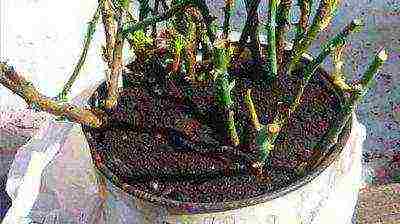 We still need to save them before planting, because in our stores the seedlings appear already in March, and they are planted in open ground no earlier than mid-May. 21 March.
We still need to save them before planting, because in our stores the seedlings appear already in March, and they are planted in open ground no earlier than mid-May. 21 March.
When is the best time to plant cherries, and how to preserve purchased seedlings before planting? Choosing the "right" seedlings ↑. The video shows how to dig in seedlings if the time for planting cherries is postponed.
 How to preserve rose seedlings before planting? If you do not plan to plant them in the ground within the next 10 days, be sure to dig in your roses. How to properly preserve roses before planting?
How to preserve rose seedlings before planting? If you do not plan to plant them in the ground within the next 10 days, be sure to dig in your roses. How to properly preserve roses before planting?
One thing remains - to find a way to preserve the seedlings until spring. And yet, if you purchased container seedlings, and the planting is late, try to keep them anyway.
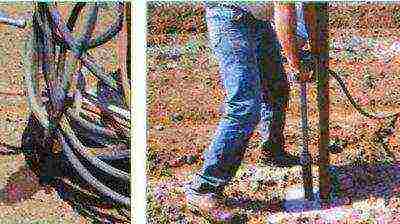 How to choose and preserve before planting February is an active time, they wake up and open their doors Of course, there is still a lot of time before planting, because seedlings of most crops are planted only in March, and sometimes in April, when February 3
How to choose and preserve before planting February is an active time, they wake up and open their doors Of course, there is still a lot of time before planting, because seedlings of most crops are planted only in March, and sometimes in April, when February 3
In late autumn, inexpensive fruit tree seedlings are often on sale. How to keep them until spring if it is too late to plant? L. Sigacheva, Moscow region
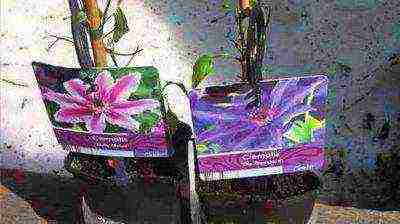 How to preserve seedlings before planting, seedlings, roses, buddley. Options. In this case, I recommend planting seedlings in containers with a substrate and storing them until planting either in a cold cellar, or digging in the garden and covering them securely for the winter.
How to preserve seedlings before planting, seedlings, roses, buddley. Options. In this case, I recommend planting seedlings in containers with a substrate and storing them until planting either in a cold cellar, or digging in the garden and covering them securely for the winter.
How to keep a plant in an apartment before planting in the ground. Spring has come, the beginning of worries about your garden and flower garden. You should not refrain from buying clematis for fear of the death of the seedling before planting in the ground.
 When the time comes for the seedlings to root, they will no longer be susceptible to diseases, they will immediately take to growth and gain strength, while spring plantings In order for the planting material not to disappear over the winter, you need to know how to preserve the seedlings until spring.
When the time comes for the seedlings to root, they will no longer be susceptible to diseases, they will immediately take to growth and gain strength, while spring plantings In order for the planting material not to disappear over the winter, you need to know how to preserve the seedlings until spring.
Sources:
No comments yet!
Hello dear gardeners, gardeners and flower growers! Spring, you all acquire some plants, some of you have mapped out a road to one garden center, someone mapped a road to some nursery, but be sure, I beg you, I just beg you, get perennial plants here only in good companies, only in good stores, only in good nurseries! In no case do not allow yourself to buy plants somewhere on the roads from some random sellers. You can lose not only money, time, energy, but also nerves.
How to preserve seedlings of trees and shrubs before planting in open ground
So, you have purchased a one-year-old seedling, for example, an apple tree. It should look something like this. An annual seedling is literally a twig. If several lateral shoots have suddenly formed on the seedling, then this is already a two-year-old seedling. Of course, in such packaging it is not entirely clear what is there, what roots, but, nevertheless, firms do not compromise themselves, therefore, as a rule, they make good packaging, as you see in this case. There is a substrate, the roots are clearly moistened, the substrate is moist - now we will see that - well wrapped. See what kind of substrate? Wet. So I touch my finger - my finger gets dirty. We must open it, and before planting it is already in the garden - and it is too early to plant, we still cannot prepare the pits, because the soil is frozen - during this time we must help the plant at least a little. We will take it and put it in some kind of container, in a pot. Do not keep it somewhere in the bath or in the kitchen on the floor, but take this plant of yours to the balcony. On the balcony, it will continue to rest remarkably. You see, the kidneys are still dormant. And at this time, you should try to choose a plant with dormant buds, so that the buds are pressed, the tissues are elastic at the shoots. This is how they should bend. This means that the plant is lively, pretty, the kidneys are plump.
We check the condition of the trunk of the purchased tree or shrub sapling
Here is our root system. It often happens that the grower twists the roots when they are too large. And we see with you that the tip of the spine is white. This means that the plant has already come to life, which means that it is about to start growing. And once in such a container as it was, it is clear that this apple tree can simply die, despite the fact that you buy a good product.
So we freed the roots a little from the substrate, gave them freedom. For such a root system, such a two-liter capacity will be enough. You can fill the drainage, or you can not fill it, because if you fill the drainage, the root system will be cramped. Therefore, it's okay, for a month or a month and a half, this plant will simply stay with us in a new container with neat watering, maybe we even have to feed the plant a little. We sprinkle the soil. But what kind of soil? You can take, for example, such a soil - garden, or a universal soil prepared by us in advance, where we have land from the garden, and river sand, and very good peat, and perlite, vermiculite. So the soil - just sit down and grow on its own.
We check the condition of the roots of the purchased seedling of a tree or shrub
So, we take with you, we pour a little soil on the bottom - we should always do this - so that the bottom is not naked, and the roots do not immediately lie on the bottom. Sprinkle our plant with this earth of ours. Good commercial land can be used, but not peat. Dear friends, please do not buy these peat pillows that are selling. The soil will surely dry out, then get wet, there will not be enough food, or, on the contrary, the food will be so unevenly supplied to the roots - it is thick, then empty - and this will not make them feel good, these roots will die. So you can even alternate your land with purchased land - a handful of one soil, a handful of another. The soil should have a reaction somewhere around 5.5-6. This is a very good reaction.This is how we compact the soil, especially around the perimeter. We shed a clod of earth, actively water the soil so that it snuggles to the roots. The roots will immediately feel the moisture, start their work. Let's add a little more. But you don't need to rush the plant, you don't need to wake it up ahead of time. If there is some cold, rather light room, then it will normally stay in it. There is no need to rush. Why? Because sometimes plants wake up early. It would seem that in May you can already plant it, it is already with leaves, but these leaves are not needed, because there may be frosts, and frosts will definitely destroy these leaves, and you will have to cover these plants. Therefore, do not wake up your plants ahead of time.
We transplant the seedling into a seedling container
Thus we watered, temporarily planted. Again, the root system, growing in this pot, covering this new soil, feeding on good elements that we can include after 1-2 waterings, say, mineral fertilizers ... Every third watering we apply mineral fertilizers. Be sure to use annotation. You don't need much. Less is better than more. And be sure to try to treat the plant from diseases and pests during this period before planting. There are a lot of drugs now. From diseases, as a rule, these are copper-containing preparations, from pests you will find these preparations everywhere in the markets and in stores, ask, exactly, good universal preparations, so that no infection can be brought into your garden.
Dear friends, I wish you all the best, great success and the acquisition of wonderful seedlings.
Nikolay Petrovich Fursov, Candidate of Agricultural Sciences.
How to store seedlings in the spring before planting at home
In February-April, the active sale of seedlings begins. At fairs and nurseries, boxes with future trees, shrubs, flowers are full of. Eyes run up, and there is a desire to buy a lot at once. You should not refuse, there are several ways how to preserve seedlings before planting at home.
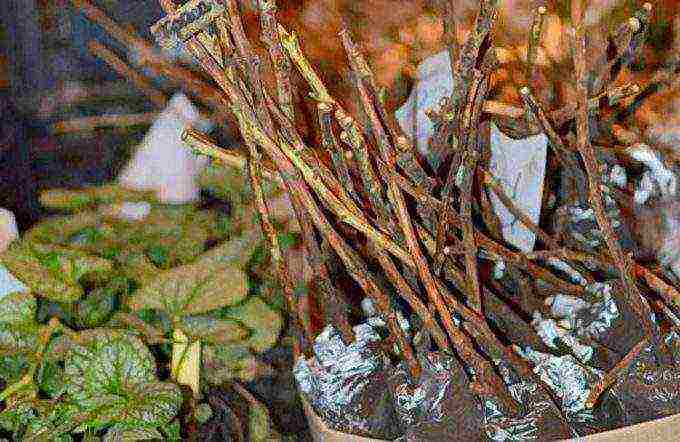
Inspection and preparation
Before storing purchased seedlings, you need to immediately mark (hang a tag with the name of the variety), inspect the buds and roots.
The introduced specimens in February-March, most likely, still have dormant buds.
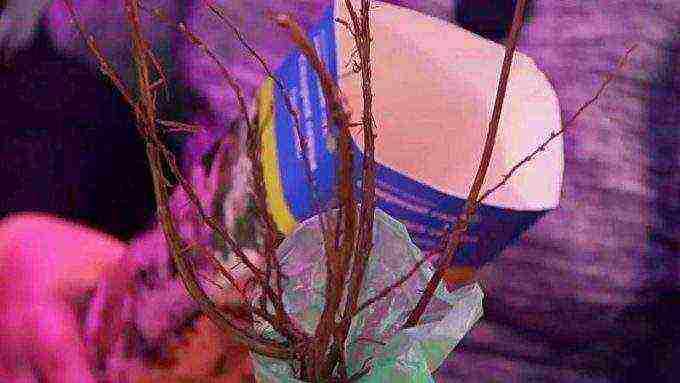
There may also be those that have already grown, but still small, no more than 2 cm. They are also suitable for "sealing".
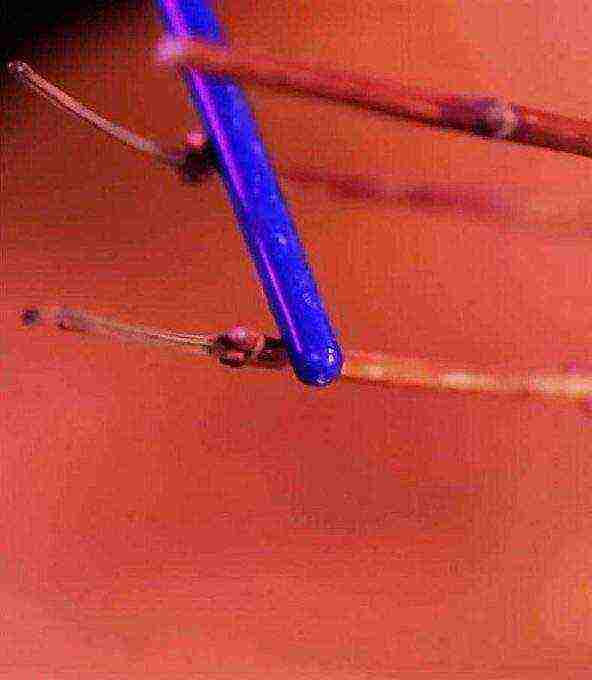
If the buds are already actively growing, then before planting in a permanent place, the seedling is planted in a pot as a houseplant.
Cut off soaked and broken off roots, long, dry or diseased shoots with a garden pruner. Shorten long roots. Treat the cuts with brilliant green or sprinkle with crushed coal.
Shoots damaged by the fungus cannot be left for storage, the disease will spread throughout the seedling and there will be nothing to plant by the time of planting.
If young trees were sent by mail, then the root system could dry out. Before storing, wrap the spines in a damp cotton cloth and hold for a while.
In grafted specimens, especially rose seedlings, the site of the graft is checked. Often there is no protective paraffin plug and to protect the sensitive area, it is wrapped in polyethylene.
How to preserve seedlings before planting
It is difficult to keep the purchased seedlings at home, because in addition to the coolness, you still need to find a place. We offer several options:
- Prepare a clean, thin plastic wrap, punch holes in it for ventilation. Wrap the seedlings, then wrap them in newspaper to protect them from light, and secure with elastic bands or ribbons. Place in dry plastic containers and store in a cool, dark place.
- The cuttings are usually small and can be stored in the refrigerator on the bottom shelf.
- Large seedlings of trees and shrubs are placed in boxes with wet sand, while the roots are not wrapped.
- To prevent the root system from drying out, place it in a plastic bag, make several holes in it so that the roots do not start to rot. Wrap the top with newspaper and secure with ribbons or an elastic band. Place in a plastic container and place in a dark, cool place; at home, a balcony would be the best option.
A hood made of newspaper or covering material, put on the seedling, will protect from sunlight, thereby prolonging the dormant period.
- Plant as a houseplant. Note that each pot has drainage holes that we don't need. So that the water does not wash out, the bottom of the pot is covered with a cloth and only then the earth is poured.
Soak cuttings or seedlings in potassium humate before planting. How to prepare the solution is indicated on the package. After planting, move the pot to a room where the temperature ranges from 5-7 ° C. When the buds wake up and grow, transfer the pot to a bright, cool place.
You can save grape shoots before planting in other ways, more details can be found in the topic "How to save grape cuttings in winter."
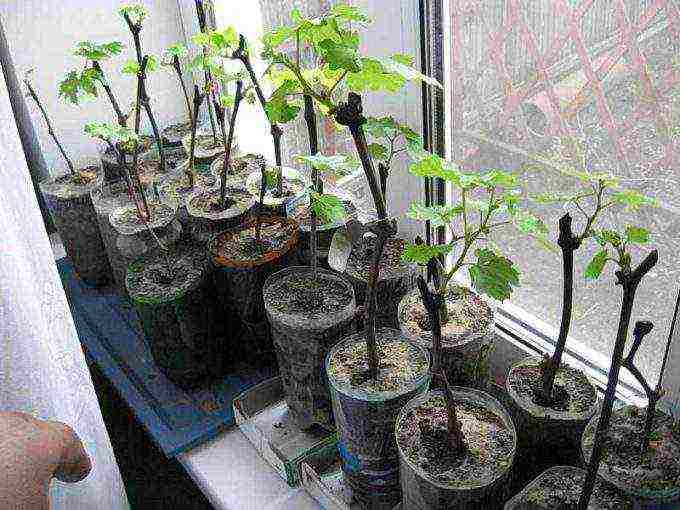
Storage conditions
It is important to monitor temperature and humidity levels prior to planting. A hygrometer will be a good helper here. The ambient temperature should be within 0 ... + 2 ° С. It is with her that the plants fall into a state of dormancy and calmly survive the waiting time.
If the apartment is on the ground floor and there is a cellar, then it is better to transfer the seedlings for storage until they are planted in the cellar.
During rest, do not open the planting material, and do not touch it again, it is quite enough once a month to very carefully check the condition of the kidneys.
If the seedlings were bought in the fall, but you need to save it until spring, then for the winter they are placed in a pit. To protect against field rodents, spread juniper or spruce branches on top.
Sponsored Links
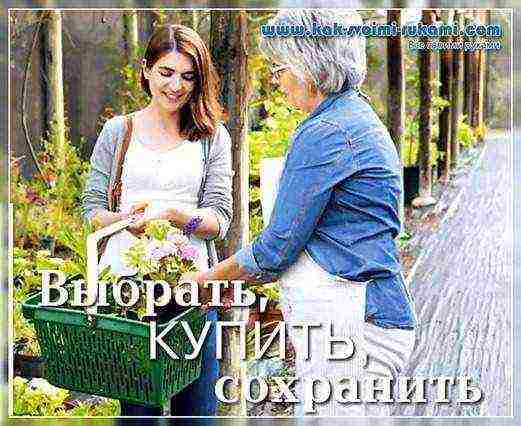
Buying plants is a responsible business. Let's talk about that. what you need to pay attention to when choosing seedlings of fruit and ornamental trees and shrubs
SPRING - TIME TO BUY PLANTS, BOTH FRUITS AND DECORATIVE. IT IS IMPORTANT NOT ONLY TO CHOOSE THE RIGHT TREE, SHRUB OR FLOWER, BUT ALSO PRESERVE IT BEFORE PLANTING IN THE GARDEN. LET'S TALK ABOUT THIS
We will learn to choose, store and plant planting material in the spring.
Seedlings grown in containers are easiest to transplant, their root system is well developed, not disturbed, such plants quickly take root and grow. It turns out that we are simply handling the plants: when we take them out of the container and plant them in the garden, we preserve the integrity of the root system.
Seedlings grown in the field, in the nursery, are often wrapped in foil, after adding nutritious soil to the roots and forming a briquette, which is placed in a colorful package. The root system of such plants does not dry out; in this state, the seedling can be stored for several months.
See also: Storage of seedlings - how to save before spring planting?
Fruit trees
WE BUY SEEDLINGS
Before purchasing a seedling, inspect it carefully.
He must be healthy, the bark must not be damaged. This is the first thing to pay attention to.
When buying in a frosty period, pay attention to the buds: they should be dormant, and the seedling itself should not be overdried (which is well displayed on the bark, it becomes wrinkled, a slight crunch is heard when bent).
The shoots of a healthy seedling are elastic, bend easily, have an even bark color, and the buds are clearly visible.
Examine the vaccination site carefully:one hundred accretion of rootstock and scion must be clean, with a characteristic scar.
The tops of the seedlings can be pruned - it's not scary; form a new leader during the growing season, and after a year or two you will not see the cut.
Opened buds on a seedling are permissible, in this case, we can plant it immediately on a permanent place, and there is no need for storage.
WE SAVE BEFORE LANDING
Do not bring purchased seedlings into the heat., by doing this you will only stimulate growth. Wrap them in a nonwoven covering material and store them in a cold room until planting (ideally in a cellar, cold basement, garage, or even on a balcony).
Check the condition of the soil, do not let it dry out, moisturize in a timely manner, but also do not fill.
The seedling must be accompanied by a label indicating the variety, it must be attached to the seedling or to the container in which it was grown.
Protect the plant from sunburn before planting (or immediately after);
You can use covering material or garden whitewash.
Fruit shrubs
All seedlings of fruit bushes (currants, gooseberries, raspberries, honeysuckle, blackberries) grown in containers, after purchase, can be stored outdoors in the shade or in a cold room until disembarked in a permanent place.
Seedlings with an open root systempurchased from the nursery, immediately place in a bag, wrap the roots in cloth or paper, moisturize and keep in the shade. On the garden plot, if the planting site is not yet ready, dig in the seedlings in the garden bed, sprinkle the roots with soil, and water well. It is not necessary to soak such seedlings; some immerse them in a bucket of water - that's a mistake! An attempt to soak dried seedlings, of course, has the right to be, but in this case it is much more effective to cut the roots with a sharp pruner, shorten the shoots greatly, and then plant the plant in loose fertile soil and water it well.
Blackberry and raspberry seedlings should be chosen with care... Do not forget that the shoots of these crops live for two years. In the first year they gain vegetative mass, in the second year they bloom and give berries, after which they dry up. Therefore, the seedlings should be shoots of the first year, and they will give the first harvest only in the second year.
Perennials
Perennial flower crops are most often offered by sellers in the spring. The desire to purchase a new variety is great, and colorful packaging appears already in February. But it is still very early, and we do not understand what to do with them, how to save them until they are planted in the garden in April-May.
MODERN VARIETIES OF HYBRID Iris amaze the imagination with the shape and color of the flowers (white, pink, crimson, blue, blue). Old varieties are often found on garden plots, many consider them almost weedy, often planted from the site on the side of garden roads; even thrown away, they often take root, grow and bloom beautifully in wastelands.
Modern varieties, in contrast to the "unkillable" old ones, are often capricious, which undoubtedly pays off for their beauty.
In the spring, dealerships of the coveted rhizome with one "spatula" of leaves appear on sale (this is how the fan of iris leaves is called). Carefully inspect the cut: there should be no rot, sores and damage. Remember that it is better to dry this plant (even if the leaves are almost dry, they will tolerate it more easily) than to keep it very moist. It rots easily when wet.
Damaged rhizomes of iris can be cured, rotten parts can be cut with a sharp knife to healthy tissue, and the cut can be powdered with crushed charcoal or treated with ordinary brilliant green, applying it to the cut with a cotton swab. Store the rhizomes in a cool, dry place, rarely dampening slightly to avoid drying out.
Daylilies and hosts have a well-developed root system, often with only one bud. Such delenki are most often found in bags with ventilation holes. Choose healthy specimens with a well-formed kidney. They should be planted in peat pots and placed in a cold room or cellar, periodically moistening slightly. And in the garden, they can be planted in a permanent place along with the pot.
Hosta... Please carefully read the description of the variety before purchasing. Pay attention to the size of the bush: hosts are very different in size of leaves - there are giants with a bush up to a meter in size, and there are babies with a bush no more than 20 cm.Consider this when landing in a permanent seat.
Day-lily... This plant, on the contrary, grows well in the sun - it practically does not bloom in deep shade and grows poorly. The varietal variety of this perennial captivates with its many colors, long flowering and unpretentiousness.
ON A NOTE
I want to draw your attention to the lilac. There is an opinion that it is easy to propagate it - just dig up the growth and plant it.
But disappointment comes when the planted shoots bloom: instead of the desired variety, the most common lilac blooms. The point is this: varieties are often propagated by grafting, grafting varietals on wild shoots - which blooms with you if you separate the shoots from it. Varietal lilacs have a weak root system, so it is advisable to propagate them by grafting, like apple trees, pears, plums.
Reference by topic: Choosing quality seedlings - types of rootstock, planting and care
How to preserve seedlings before planting in open ground
Saplings: how to choose and save the right one. (11.02.16 g.)
Sponsored Links
Below are other entries on the topic "How to do it yourself - a householder!"
How to store seedlings in a trench? Do-it-yourself attachment for seedlings Purchased ... When is it better to plant seedlings - in autumn or spring? Which tree planting is better - ... How to store rose seedlings Correctly store seedlings of the queen of flowers So ... Smolensk method of planting seedlings and a garden according to this system How to plant trees according to "Smolensk ... Storage of seedlings - how to save until spring planting? HOW TO PRESERVE SEEDLINGS TILL SPRING ... Do-it-yourself autumn planting of an orchard - professionals advise Autumn planting of seedlings - from ... How to preserve planting material until spring How to store seedlings and cuttings ...
Subscribe to updates in our groups.
Let's be friends!
Very often such a problem occurs among summer residents - they purchased or ordered by mail the necessary seedlings of ornamental or fruit crops, and it is too early or too late to plant. What they usually do is cover the roots, store in a cool place until planting. Saplings start to grow, white thin roots develop - the most important plant feeders when planting. Then they bring them to the site, these roots die, because. practically do not tolerate the slightest drying out. As a result, the seedling is sick for a long time and does not soon begin to please the eye. In our farm we practice early planting in containers - fortunately, there are a lot of them on sale now - of any size. The substrate is peat with fertile soil 1: 1. As a result, we get seedlings with a closed root system in containers that are not afraid of replanting even in summer. You can see for yourself in the photo - a rose at the end of May.
Hello dear gardeners, gardeners and flower growers! Spring, you all acquire some plants, some of you have mapped out a road to one garden center, someone mapped a road to some nursery, but be sure, I beg you, I just beg you, get perennial plants here only in good companies, only in good stores, only in good nurseries! In no case do not allow yourself to buy plants somewhere on the roads from some random sellers. You can lose not only money, time, energy, but also nerves.
How to preserve seedlings of trees and shrubs before planting in open ground
So, you have purchased a one-year-old seedling, for example, an apple tree. It should look something like this. An annual seedling is literally a twig. If several lateral shoots have suddenly formed on the seedling, then this is already a two-year-old seedling. Of course, in such packaging it is not entirely clear what is there, what roots, but, nevertheless, firms do not compromise themselves, therefore, as a rule, they make good packaging, as you see in this case. There is a substrate, the roots are clearly moistened, the substrate is moist - now we will see that - well wrapped. See what kind of substrate? Wet. So I touch it with my finger - my finger gets dirty.We must open it, and before planting it is already in the garden - and it is too early to plant, we still cannot prepare the pits, because the soil is frozen - during this time we must help the plant at least a little. We will take it and put it in some kind of container, in a pot. Do not keep it somewhere in the bath or in the kitchen on the floor, but take this plant of your own to the balcony. On the balcony, it will continue to rest remarkably. You see, the kidneys are still dormant. And at this time, you should try to choose a plant with dormant buds, so that the buds are tight, the tissues are elastic at the shoots. This is how they should bend. This means that the plant is lively, pretty, the kidneys are plump.
We check the condition of the trunk of the purchased tree or shrub sapling
Here is our root system. It often happens that the grower twists the roots when they are too large. And we see with you that the tip of the spine is white. This means that the plant has already come to life, which means that it is about to start growing. And once in such a container as it was, it is clear that this apple tree can simply die, despite the fact that you buy a good product.
So we freed the roots a little from the substrate, gave them freedom. For such a root system, such a two-liter capacity will be enough. You can fill the drainage, or you can not fill it, because if you fill the drainage, the root system will be cramped. Therefore, it's okay, for a month or a month and a half, this plant will simply stay with us in a new container with neat watering, maybe we even have to feed the plant a little. We sprinkle the soil. But what kind of soil? You can take, for example, such soil - garden, or a universal soil prepared by us in advance, where we have land from the garden, and river sand, and very good peat, and perlite, vermiculite. So the soil - just sit down and grow on its own.
We check the condition of the roots of the purchased seedling of a tree or shrub
So, we take with you, pour a little soil on the bottom - this we always have to do - so that the bottom is not naked, and the roots do not immediately lie on the bottom. Sprinkle our plant with this earth of ours. Good commercial land can be used, but not peat. Dear friends, please do not buy these peat pillows that are selling. The soil will surely dry out, then get wet, there will not be enough food, or, on the contrary, the food will be so unevenly supplied to the roots - it is thick, then empty - and this will not make them feel good, these roots will die. So you can even alternate your land with purchased land - a handful of one soil, a handful of another. The soil should have a reaction somewhere around 5.5-6. This is a very good reaction. This is how we compact the soil, especially around the perimeter. We shed a clod of earth, actively water the soil so that it snuggles to the roots. The roots will immediately feel the moisture, start their work. Let's add a little more. But there is no need to rush the plant, no need to wake it up ahead of time. If there is some cold, rather light room, then it will normally stay in it. There is no need to rush. Why? Because sometimes plants wake up early. It would seem that in May you can already plant it, it is already with leaves, but these leaves are not needed, because there may be frosts, and frosts will definitely destroy these leaves, and you will have to cover these plants. Therefore, do not wake up your plants ahead of time.
We transplant a seedling into a seedling container
Thus we watered, temporarily planted. Again, the root system, growing in this pot, covering this new soil, feeding on good elements that we can include after 1-2 waterings, say, mineral fertilizers ... Every third watering we apply mineral fertilizers. Be sure to use annotation. You don't need much. Less is better than more. And be sure to try to treat the plant from diseases and pests during this period before planting. There are a lot of drugs now.From diseases, as a rule, these are copper-containing preparations, from pests you will find these preparations everywhere in the markets and in stores, ask, exactly, good universal preparations, so that no infection can be brought into your garden.
Dear friends, I wish you all the best, great success and the acquisition of wonderful seedlings.
Nikolay Petrovich Fursov, Candidate of Agricultural Sciences.
